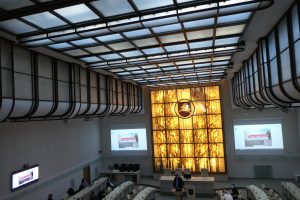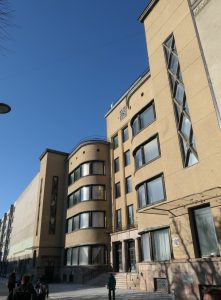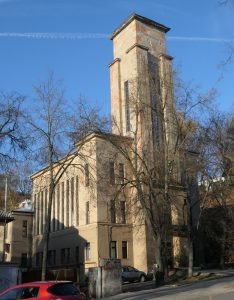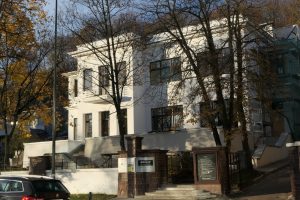One of the case studies of the Smart Rehabilitation 3.0 project workshop, has been inscribed on the UNESCO World Heritage list in September 2023 as Modernist Kaunas: Architecture of Optimism, 1919-1939. The main reasons are:
After the declaration of an independent Republic of Lithuania in 1918, Kaunas served as the provisional capital of the state. The status of provisional capital was crucial for the city’s unprecedented growth and architectural development. In less than twenty years, under the auspices of the new national government and civic initiative, Kaunas was transformed into a modern city based on the assimilation of modern urban planning and architecture with pre-existing natural, urban, and other local conditions. Architecture, specifically in the form of a local inflection of the international language of modernism, played a particularly important role in that transformation. Kaunas Modernism, therefore, bears exceptional testimony to an authentically multifaceted modernism born out of local political and cultural exigencies and an evolutionary urban modernisation responding to pre-existing humanmade and natural features.
The nominated property comprises two areas: Naujamiestis and Žaliakalnis. Naujamiestis (New Town), a generous grid planned in 1847, was attached to the eastern edge of the Old Town and extends eastwards along the valley of the Nemunas River. Naujamiestis was modernised and intensively developed in 1919–1939. Encircling Naujamiestis to the north and east is Žaliakalnis (Green Hill) – a distinctive natural plateau rising to an average of 35–40 metres. Žaliakalnis was developed as a garden city residential suburb in 1919–1939 according to a 1923 master plan of Kaunas, which enabled a seven-fold increase in area and accommodated a doubling of the city’s population to 155.000 over the same period.
The most significant attributes of the city’s resulting urban form and associated architecture are defined by the inherent optimism and civic initiative behind the creation of the new modern city as a provisional capital with inherited geographical and urban morphological distinctiveness. A rich architectural heritage of emerging modernism overlaid on the 19th century urban grid and a new garden suburb create a unique ensemble of two complimentary urban landscapes. The sensitive adaptation of the pre-existing 19th-century urban grid, implementation of a garden city residential suburb, the successful integration of the natural environment, and the assimilation of local and global interpretations of architectural modernism gave birth to Kaunas Modernism, that reflects a diverse and innovative response to Lithuania’s encounter with modernity and early 20th century European modernism. 1500 of the 6000 remaining buildings erected in Kaunas in 1919–1939 are concentrated in the nominated area and bear exceptional testimony to the multifaceted nature of architectural modernism in response to local conditions. The façades, streetscapes, and natural elements, combined with the pre-existing urban and geomorphological setting, create a unique sense of place exhibited through broad panoramas, open urban and natural spaces, and varied topography.








